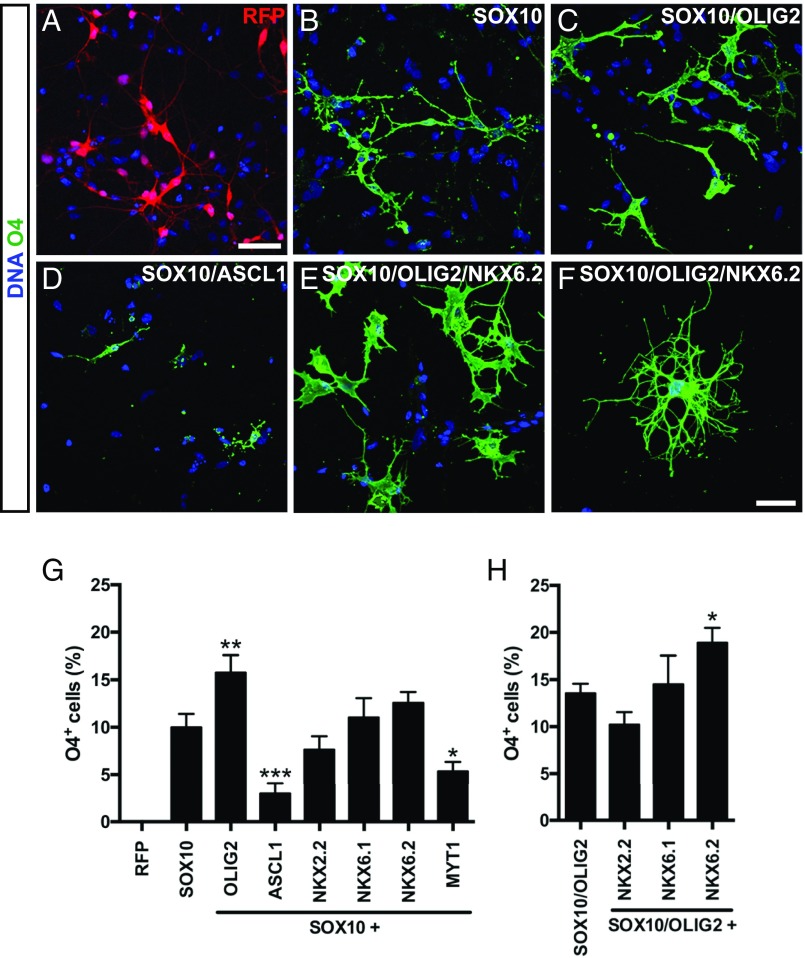Fig. 1.
Screening for oligodendroglial lineage inducing TF in human NPC. Human iPSC-derived NPC were infected with individual OL-specific TFs or RFP control virus. (A–F) OL-lineage commitment of infected iPSC-derived NPC was analyzed 14 d after transgene induction by immunostaining using the OL-specific antibody O4 (green). Nuclei were counterstained with Hoechst (blue). (A) Control cultures did not express the O4 epitope. (B) SOX10 was the only tested TF inducing O4+ OL. (C) Addition of OLIG2 enhanced the OL-lineage commitment, whereas (D) ASCL1 led to a decreased number of O4+ iOL. (E) Coexpression of SOX10, OLIG2, and NKX6.2 increased the number of O4+ cells, (F) accompanied by the appearance of iOL with a more mature oligodendroglial morphology. (Scale bars, 50 µm in A–E and 25 µm in F.) (G and H) Quantification of O4+ iOL over all cells with indicated TF combinations 2 wk after transgene induction. Data are presented as mean of replicates from three independent experiments + SD. One-way ANOVA with Bonferroni’s multiple comparisons test was used as statistical test (*P < 0.05, **P < 0.01, ***P < 0.001).

